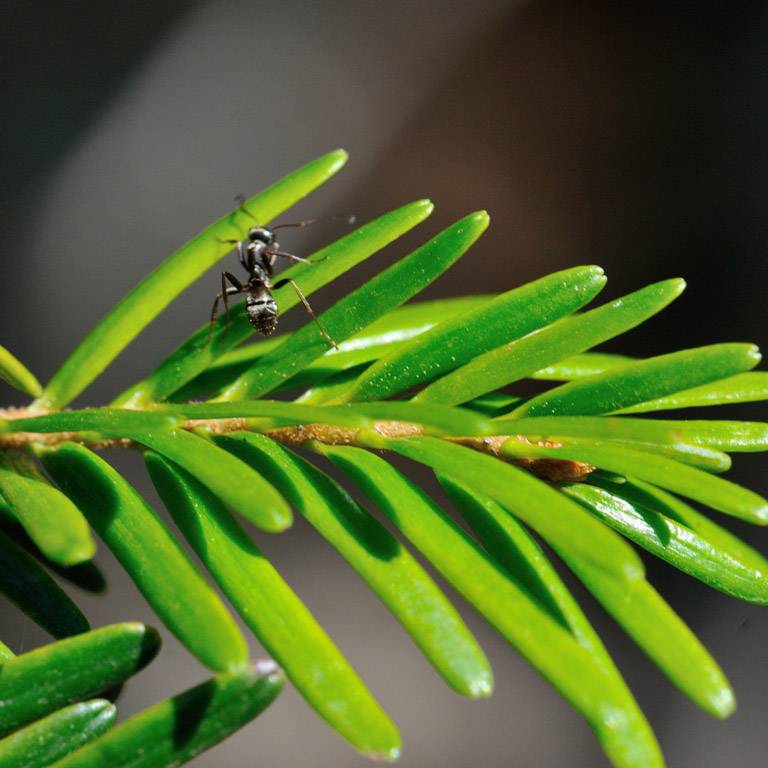The Story of Aphids
 The honeybee usually finds its food (nectar and pollen) in the corollas of plants and flowers.
The honeybee usually finds its food (nectar and pollen) in the corollas of plants and flowers.
The nectar is secreted by the nectarines (a plant gland) with the flow of sap created in the tissues of the leaf by way of photosynthesis. This is a sweet liquid that is produced directly by the plant and then harvested by bees.
The plant sap can be removed by small insects such as aphids, cochineals, etc using their proboscis (a sucking organ).
After absorbing, assimilating, and transforming the fir tree sap, the aphid excretes a sweet substance known as honeydew. The honeydew is a delicacy for numerous insects such as butterflies, wasps, ants, bumblebees, and of course honey bees.
Because the harvest of Fir Tree Honey requires a healthy population of aphids in the forest, the harvest has become chancy and irregular. A long time ago, beekeepers could expect a successful harvest every three years. Times have changed …
It is well known that the agricultural chemistry industry, in its drive to make a profit, wages a war against nature without taking into consideration the consequences on ecosystems.
Since the arrival of neonicotinoid insecticides, aphids have almost disappeared. Without aphids, there can be no Fir Tree Honey. In addition to aphids, these insecticides are extremely toxic for bees and could wipe them from the surface of the earth.
Try our Fir Tree Honey
Discover the origins of our other honeys:
